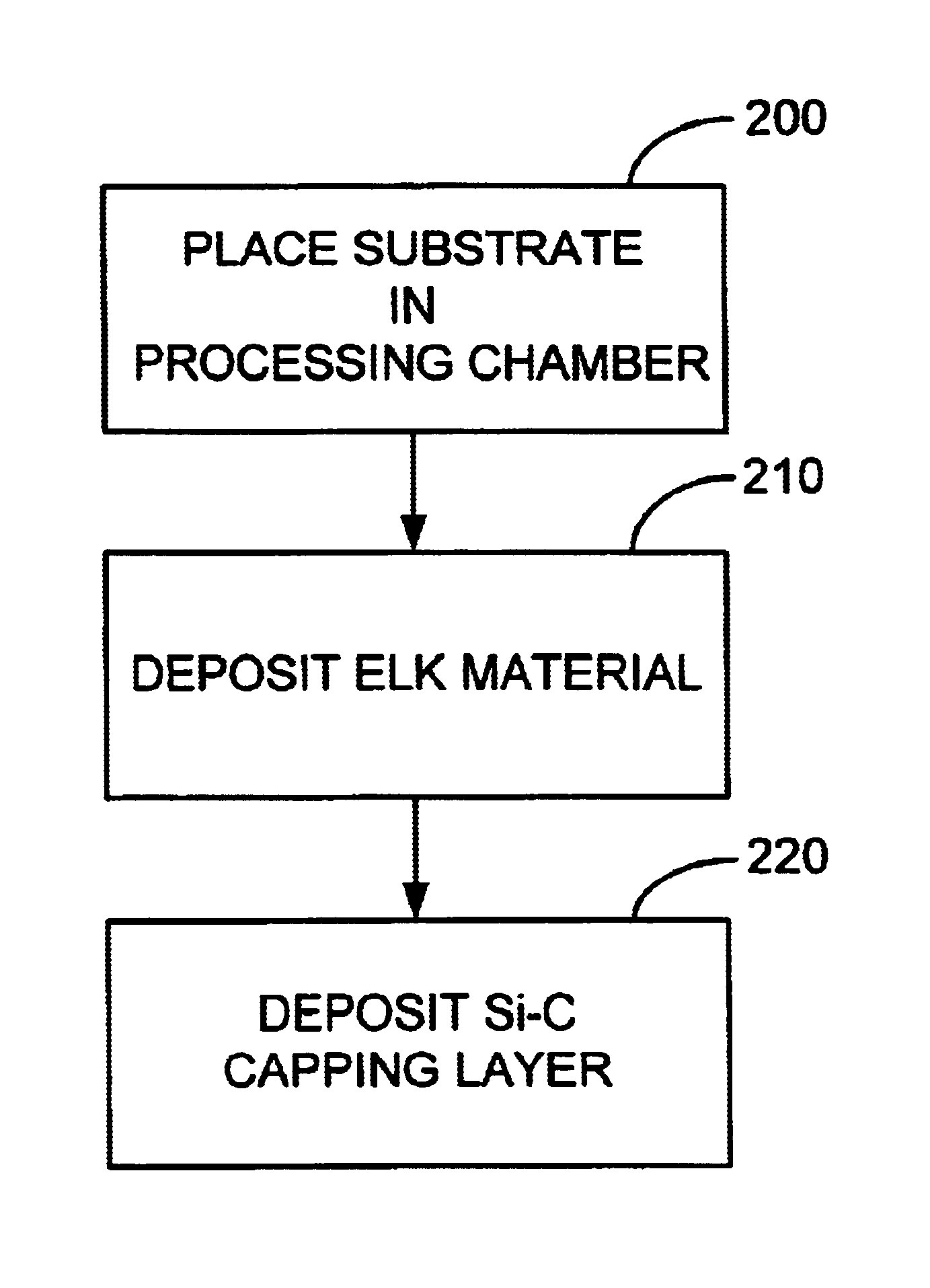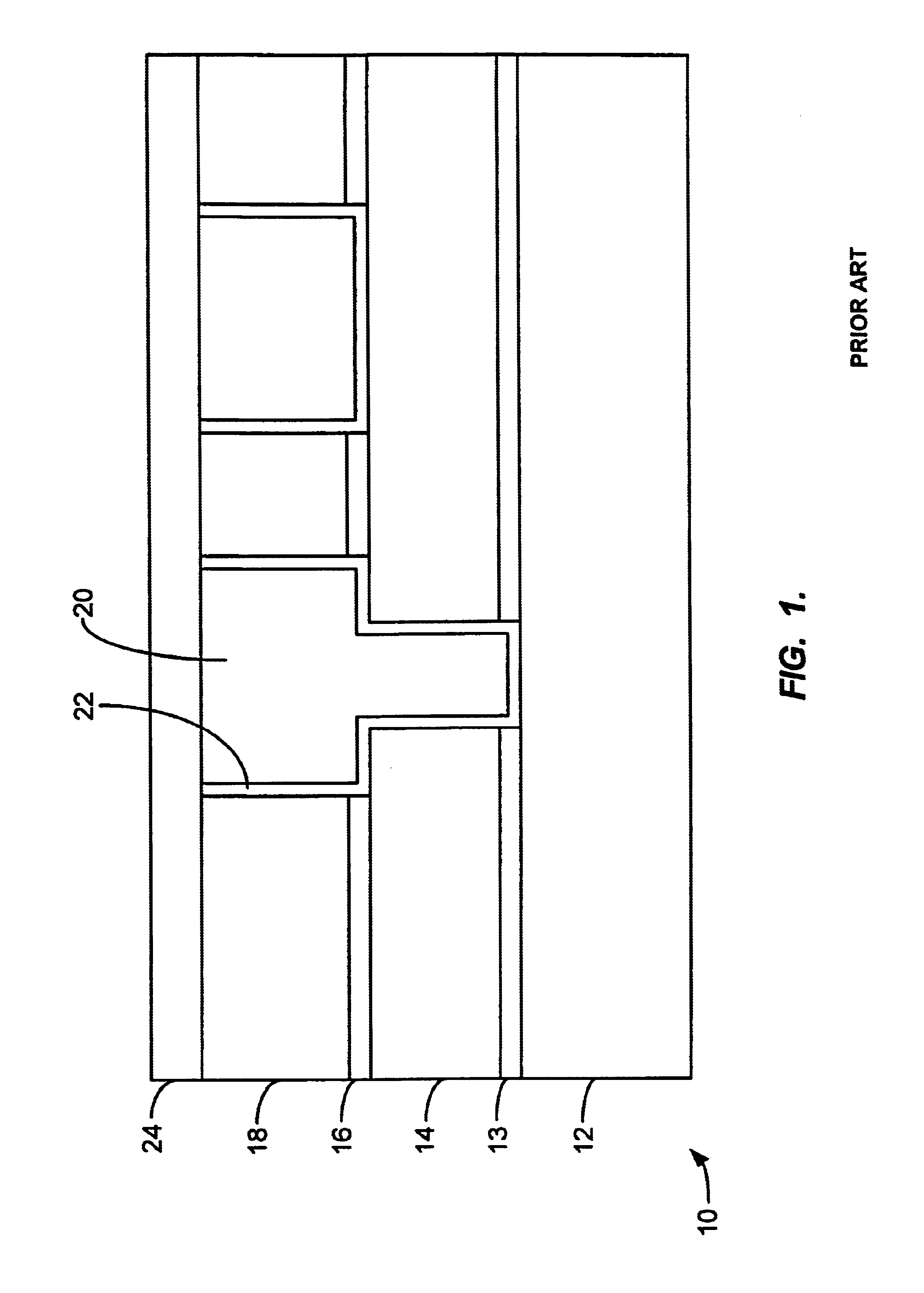Capping layer for extreme low dielectric constant films
- Summary
- Abstract
- Description
- Claims
- Application Information
AI Technical Summary
Benefits of technology
Problems solved by technology
Method used
Image
Examples
Embodiment Construction
[0019]Embodiments of this invention provide a method to deposit a silicon carbide type low dielectric constant film as a capping layer or a carbon doped silicon oxide film as a capping layer or a combination thereof over an extremely low dielectric constant (“ELK”) film that may contain oxidizable Si—CH3 and / or Si—H groups. The capping layer is deposited using a PECVD process in either a non-oxidizing or an oxygen starved plasma. Both the non-oxidizing and the oxygen starved plasma processes prevent or minimize oxidation of the underlying ELK film.
[0020]The lack of an oxidizing plasma in the PECVD deposition process allows the capping layer to be deposited without degrading the ELK film. Using process conditions described below capping layers having a dielectric constant below 5 and preferably below 3 is deposited on an ELK film. Using these process conditions, the deposition regime of the capping layer does not oxidize the Si—CH3 or Si—H bonds in the ELK film, and thus allows for a...
PUM
| Property | Measurement | Unit |
|---|---|---|
| Temperature | aaaaa | aaaaa |
| Length | aaaaa | aaaaa |
| Pressure | aaaaa | aaaaa |
Abstract
Description
Claims
Application Information
 Login to View More
Login to View More - R&D
- Intellectual Property
- Life Sciences
- Materials
- Tech Scout
- Unparalleled Data Quality
- Higher Quality Content
- 60% Fewer Hallucinations
Browse by: Latest US Patents, China's latest patents, Technical Efficacy Thesaurus, Application Domain, Technology Topic, Popular Technical Reports.
© 2025 PatSnap. All rights reserved.Legal|Privacy policy|Modern Slavery Act Transparency Statement|Sitemap|About US| Contact US: help@patsnap.com



